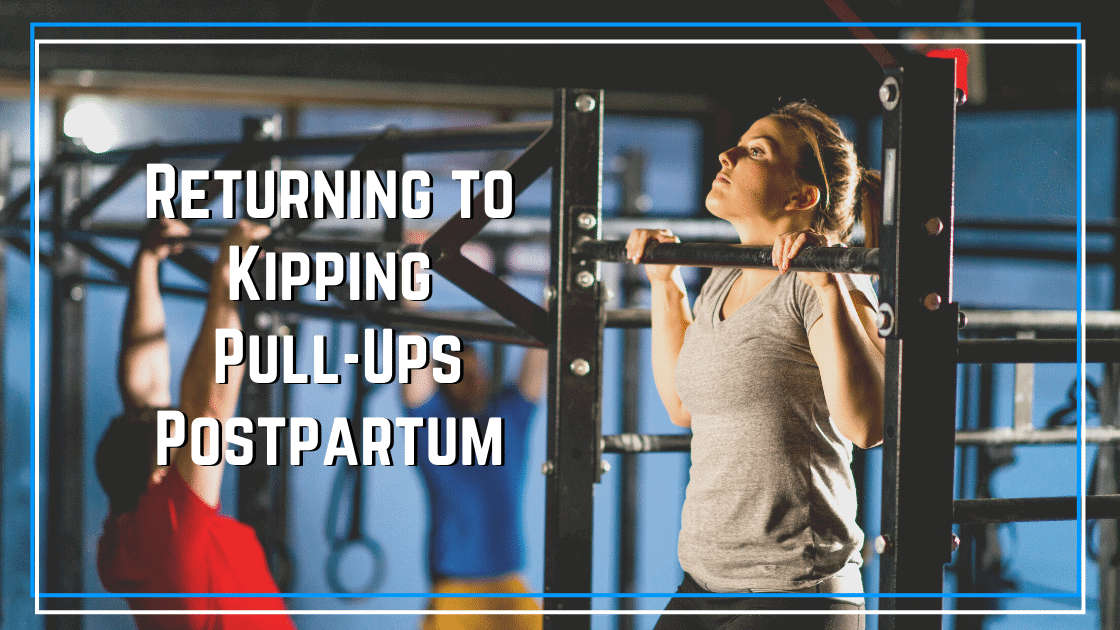There isn’t a ton of information on the internet about how exactly to return to kipping pull-ups postpartum. There’s even less when we talk about other gymnastics movements such as toes to bar and handstand work.
And of the information available, it is often put out by athletes that have had their first child and instantly consider themselves a postpartum expert despite little to no experience working with postpartum athletes. We’re excited to have Christina Prevett, a postpartum fitness specialist and physiotherapist break down five keys to returning to kipping pull-ups postpartum in the following article.
When Can I Return to Kipping Pull-ups Postpartum?
What are the safest timelines? What are the steps? What will delay or make progress go faster?
The hard part about this is that unfortunately, the answer is “it depends”.
However… we can give you some guideposts that can help you navigate the process (and then we have a program coming out to help you get there!).
You’ll find a few keys below and even more helpful information in our article “The Ultimate Guide to Returning to CrossFit Postpartum”.
Understanding Breath Mechanics
We don’t think about it as much with gymnastics as with lifting, but we can tend to hold our breath when we are doing gymnastics movements during a workout. This increases pressure in our belly and helps us move our body up towards the bar. This can increase the amount of pressure in our bellies and make it harder for healing postpartum bodies. Try to breathe throughout the movements as much as possible especially early postpartum.
C-Section Scarring Impact on CrossFit Gymnastics Postpartum
If you’ve had a C-section, then there is some scar tissue and movement to work through. When you are in the kip, you put a large amount of strength on your stomach which can pull at a healing scar. Making sure you’re doing the right scar work (with a pelvic PT if you can) can make a huge difference!
Diastasis Recti Healing
This one is harder. A healing diastasis recti (or separation of the 6 pack muscles) takes time but also takes LOADING. Its about gradually ramping up what you’re doing and knowing when you might be doing a bit too much. Signs like coning or doming can be a sign that you need to ease back a bit. If it’s significantly improved but you have a bit of doming, it might be nothing to worry about.
The following video will outline how to self assess your core for diastasis recti:
Upper Body and Grip Strength
Many of the modifications we make during our pregnancy have us off hanging from the bar. It’s done with good reason. However, this can make we have lost some upper body strength/ stability and grip strength. That will take some time to get back to!
Body Weight
This isn’t about bouncing back fast. It’s a consideration for returning to performing bodyweight gymnastics movements. It will take time or you won’t get back to pre-pregnancy body weight. We need to take that into account and it might be a reason why those strict pull-ups feel a bit harder.
Take these 5 points into consideration when you are starting your journey back to gymnastics movements postpartum. Give yourself some grace. Focus on the fundamentals and you’ll be flying on the bar in no time!
Check out Christina’s amazing programs for pregnant and postpartum women at The Barbell Mamas!






